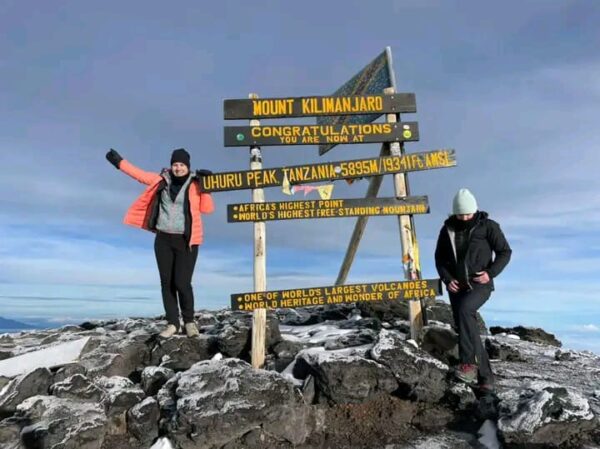You can book a suggested Itinerary from our website. These trips offer the convenience of a pre – set itinerary and a fixed price, with flexible scheduling. Travels dated are up to you.
We only organize private Safaris. That means that only you and your travel partner(s) will be on the tour. There will be only you on the transfers, the Safari vehicle and the tours. This gives you much flexibility on where to stop and tracing your favorite animals.
Or you can start from scratch and work with us to develop a totally customized itinerary and schedule. We are enthusiastically open to side trips, detours, special needs and special plans.
For a booking we need and advance payment of 50% of the tour price, the remaining balance you can pay after your arrivals to Tanzania.
Our trips use tiered pricing based on logistics. Getting people into remote areas where the best game viewing exists is more costly when there are only two people in the Land Rover, rather than four of five. Economies of scale result in lower pricing for four or five people traveling together as opposed to pricing for a couple traveling alone. As well, the logistics of moving gear around for a walking safari with numerous bush camps is more complicated and costly than a trip that involves simply staying at a lodge. Our pricing structure is tiered so you pay for the costs of your safari and don’t subsidize other groups.
Our trip prices range and depend over a wide scale. The price depends of:
We can work with you to bring your safari within your budget range. Most of our trips are Suggested Itineraries, but you can vary them as you want. Let us know what your budget is and we will do our best to design a trip that gives you the experiences you want within the budget you set.
There is no cutoff. However, flights in to Kenya and Tanzania are limited and we find that there can be problems getting seats on British Airways or KLM if you try to schedule less than two months ahead of time. Peak seasons also book up as far as nine months ahead of time. Peak seasons also book up as far as nine months ahead of time. Mid to late December is a busy time in both Kenya and Tanzania. Outside of peak seasons, should have no trouble booking if you schedule your safari at least six to eight months in advance.
Let’s start with when not to travel: November, April and May. This is the rainy season in East Africa and it becomes pretty hard to get around in the remote places our guests want to explore. The mass migration moves from Kenya in to the Serengeti in Tanzania in December, January, February, March and May. That can be a spectacular time to travel in Tanzania. Climate changes are triggering some changes in the timing of the migration, so check with us if you are interested in traveling on the edges of the normal migratory months.
This does not mean that there is not great game viewing at other times. Off- peak season can be a very relaxing time. The lodges are less crowded and the reserves not involved in the migratory pathways have as much game as normal. It’s all a matter of what you want. Check with us if you have specific time frames in mind for your travels and we can help you plan where to be so you get the best possible game viewing experiences.
Most of East Africa is savannah, comparable to the high plateau, semi – desert areas of Colorado or New Mexico. Altitude ranges from 3,000 to 7,000 feet. (Obviously Kilimanjaro climbers will experience much higher altitudes.) Temperatures during the day range from 75 to 90 degrees Fahrenheit. Nights are cool with temperatures dipping as low as 40 degrees Fahrenheit in some areas (Ngorongoro Crater, for example). Even though you will be traveling near the equator, please take our packing recommendations seriously and take along a light jacket or sweatshirt, sweater, and a fleece pullover. Additionally, bring something warm to sleep in at night. Humidity is low. If you don’t travel near the rainy season, it usually doesn’t rain.
Most of East Africa is savannah, comparable to the high plateau, semi – desert areas of Colorado or New Mexico. Altitude ranges from 3,000 to 7,000 feet. (Obviously Kilimanjaro climbers will experience much higher altitudes.) Temperatures during the day range from 75 to 90 degrees Fahrenheit. Nights are cool with temperatures dipping as low as 40 degrees Fahrenheit in some areas (Ngorongoro Crater, for example). Even though you will be traveling near the equator, please take our packing recommendations seriously and take along a light jacket or sweatshirt, sweater, and a fleece pullover. Additionally, bring something warm to sleep in at night. Humidity is low. If you don’t travel near the rainy season, it usually doesn’t rain.
You get to choose the activity level your safari. Traditional Land Rover safaris require little or no physical activity, although you can add all kinds of active adventures to your safari, including an afternoon walking safari, a morning horseback ride, or boating adventure.
Our walking Safari, and Kilimanjaro Climb, is quite active. These trips include 8 to 10 walking days. Each walking day involves 3 to 6 hours on foot, with a Land Rover shadowing the group so you can walk as much of that time as you want and ride the rest of the way. On these trips, you also spend some time in a traditional Land Rover safari, but these safaris are definitely for people who want to be more active.
You get to choose the activity level your safari. Traditional Land Rover safaris require little or no physical activity, although you can add all kinds of active adventures to your safari, including an afternoon walking safari, a morning horseback ride, or boating adventure.
Our walking Safari, and Kilimanjaro Climb, is quite active. These trips include 8 to 10 walking days. Each walking day involves 3 to 6 hours on foot, with a Land Rover shadowing the group so you can walk as much of that time as you want and ride the rest of the way. On these trips, you also spend some time in a traditional Land Rover safari, but these safaris are definitely for people who want to be more active.
Clothing.
We recommend that you bring light casual clothes, (please bring khaki clothing, sunglasses, sunscreen, hat and insect repellent if you go on safari). In the evenings it can get rather chilly, especially in the desert areas and in the months of May – August, so bring a sweater and a windbreaker. Certain 5 – star hotels require a smart dress code for dinner.
Electricity
Tanzania uses 240 Volt, but you will need adapters. Most hotels have adapters available.
On our Safari cars you can recharge your phone and cameras with the cigarette lighter. We also have small transformers in combination with the cigarette lighters (producing 220 Volt), please let us know in advance if you would need this. Especially on camping Safaris there is no other way to charge than the cars electricity.
Food and Drinks
Food is excellent and you will find a good mix of African, European and International cuisine. Flesh vegetables, seafood and meats make it an exceptional culinary experience to travel here. South African wines are sold everywhere, and are excellent. Tap water is not drinkable in most areas, only bottled water should be consumed.
Price of beverages (depending on hotel/location) :
Bottled water 1,5 1: 1 -2 US $
Soft drinks: 1 US $
Beer: 1.5 – 2.5 US $
Glass of wine: 3 – 4 US $
Bottle South African wine: 15 – 25 US $
What kind of medical care do I need before I go to Tanzania?
Before you leave for an international destination you should consult your physician. You will also need to decide on a malaria prevention medication. It is advised to take malaria prophylaxis.
Vaccination for Yellow Fever is not obligatory anymore. Other vaccinations like hepatitis, tetanus are recommended.
Visitors from most countries require a visa in order to enter Tanzania. All visitors can purchase a visa at the point of entry. You need a valid passport at least half a year, and to pay 50 US $ cash. It is only 20 minutes procedure.
If you intend to fly to Nairobi and then travel on to Tanzania, remember that you may also require a multiple entry visa to enter Kenya, even if it is only for a few hours. January 2005-2008 the Visa for Kenya and Tanzania is $50-100US per person for each country.
Some of the happiest travelers I have met are those that don’t take a camera with them and just enjoy what they see, but most people want a record of some of the fantastic sights along the way. You will get fairly close to a lot or the wildlife, but a good 35 mm camera with a 75 – 300 zoom lens will certainly help you take some great shots. It is always best to buy your film before you travel, because film here is expensive and not as fresh. 100 – 200 ASA is a good speed for general photography here. Through it can get bright, you might want to be able to get some action shots and higher speed film will be helpful. Some people also like to use 400 ASA for fast moving animals and evening shots. A beanbag is much better than a tripod for photos from the car. (The safari vehicles should have a pop – up or removable roof to make photography easier.) A cable release is useful to get shots without camera motion. Also, a flash can help with indoor and campfire shots. Remember to bring extra batteries for your camera equipment. Most people find they take 2 to 3 rolls of film per day whilst on safari.
If you bring a video camera, don’t forget the tapes (very expensive here) and the recharging accessories. You can generally recharge the camera at lodges and from the vehicle.
Our general recommendation is to tip moderately – in accordance with the level and quality of service provided. The following guidelines are generally accepted practice (per person): Safari guides(s) – US $ 20 per day, Cook – US $ 15 per day, Camp staff – US $ 10 per day, as a pooled tip to be shared among the housekeeper, waiters, bartender, etc. For porters and waiters at hotels and for taxi drivers in cities, the customary tip is approximately US $ 4. (Tipping in US $2 bills for porters and waiters is greatly appreciated). The traditional gratuity to safari guide or camp staff is people who try to exhort extra payment from unwary passengers just for shuffling their bags around.
The unit of local currency is the Tanzania Shilling (TZS). American dollars in cash or travelers cheques are acceptable in many places around town (note: AMEX Traveler cheques are often not accepted). Credit cards are accepted only in big hotels, and if you do manage to find a place to use them there will usually be a surcharge of at least 10%. Please note not to bring old US $ currency, as they are not accepted here!
![20191128_160536_A79I4389-1337×1047[2683]](https://amkaafrika.com/wp-content/uploads/2022/04/20191128_160536_A79I4389-1337x10472683-2-600x470.jpg)

